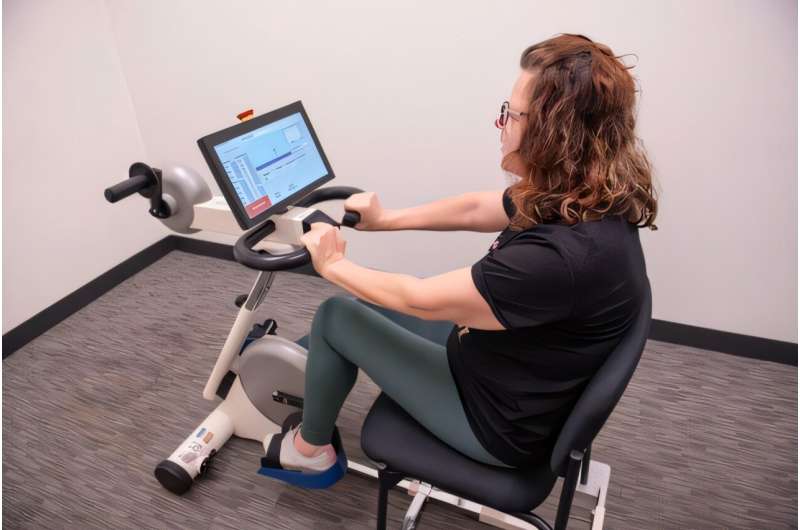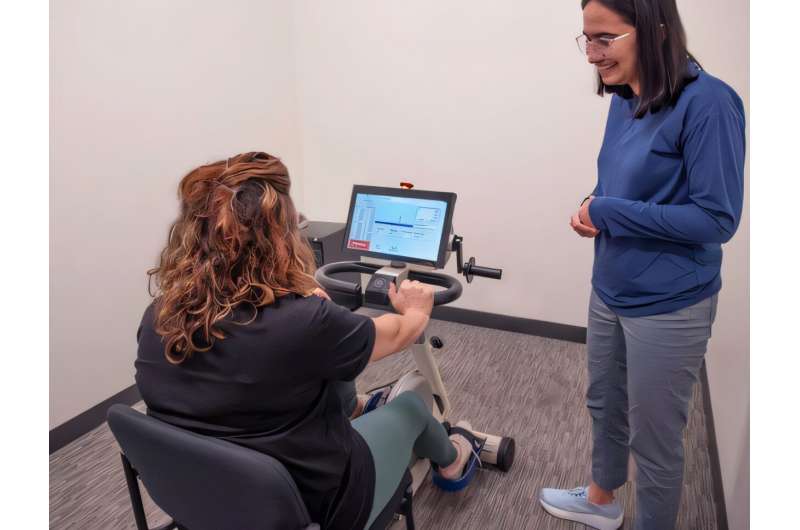It was the early 2000s when researchers first showed that exercise can help relieve the tremors that are common with Parkinson’s disease. So far, researchers haven’t been able to explain how exercise helps. But they may be getting closer to an answer.
A novel study conducted at University Hospitals and the VA Northeast Ohio Healthcare System, through its Cleveland Functional Electrical Stimulation (FES) Center, provides clues, as it shows that long-term dynamic exercise programs might have wider restorative effects on the brain signals of Parkinson’s disease (PD) patients than researchers previously thought.
Researchers used recordings from participants’ deep brain stimulation devices to try to assess how long-term exercise programs might be re-activating connections damaged by Parkinson’s disease.
Unlike previous studies, this investigation sought to decode the brain changes linked to motor symptom relief, both with the help of second-generation DBS devices and a long-term dynamic cycling exercise regimen in Parkinson’s patients.
Details of the study are published in Clinical Neurophysiology.
The pilot investigation was led by UH & VA neurologist Aasef Shaikh MD, Ph.D., who is also Vice Chair for Research at University Hospitals, Professor of Neurology, and Associate Medical Director of the Cleveland FES Center.
Prajakta Joshi, lead author of the article, is a Ph.D. candidate in biomedical engineering at the Shaikh Lab, which is part of University Hospitals and Cleveland FES Center at the Louis Stokes Cleveland VA Medical Center.
“We’ve already established over years of study that dynamic cycling regimens are beneficial for treating Parkinson’s tremor,” said Dr. Shaikh. “The latest study adds the use of deep brain stimulation and an ongoing exercise program to visualize how long-term exercise might be rewiring neural connections in the brain.”
Another unique and critical part of the study, Dr. Shaikh added, was the collaboration between the two medical systems, which provided a larger pool of potential participants for recruiting purposes.

Participants with Parkinson’s disease—including military veterans—were required to take part in 12 dynamic cycling sessions over a four-week period. All study participants had previously been implanted with deep brain stimulation devices to treat their motor symptoms, while simultaneously measuring the brain signals in the region where the electrodes are implanted.
Another critical aspect of the study was the adaptive cycling regimen investigators used. This technology empowers the bike to learn how patients perform while biking.
For example, viewing the connected game screen, riders are instructed to pedal up to 80 rpm, and to maintain that speed for about 30 minutes. Meanwhile, their pedaling intensity is shown by an on-screen balloon, and riders have to keep the balloon aloft over water but within specific parameters on screen.
However, the adaptive quality of the bike keeps riders guessing as to how much effort to apply. The bike’s motor assists them in attaining 80 rpm, but also adds and reduces resistance depending on the rider’s level of effort. Researchers believe this push and pull mechanism is particularly beneficial in treating Parkinson’s symptoms.
Kent State University Ph.D. candidate Lara Shigo, a co-author of the study, acknowledges 80 RPMs is faster than a person would naturally choose to ride, but says the level doesn’t cause fatigue because the bike’s motor assists the rider in attaining that level.

Exciting findings
Brain signal recordings were captured from participants’ implanted DBS electrodes to assess participants’ brain signals before and after each exercise session.
“Our goal was to understand the immediate and long-term effects of the exercise in that region of the brain where the electrodes are implanted, which is also the same area where Parkinson’s pathology is evident,” Dr. Shaikh said.
Researchers did not observe immediate brain signal changes, but after 12 sessions, they saw a measurable change in the brain signals responsible for motor control and movement.
Joshi and the team observed that while modern DBS systems offer a novel window into brain activity, they are limited to capturing signals only from the regions where the electrodes are implanted. As a result, other brain areas that may also contribute to the observed patterns could remain unmonitored.
The key insight, Joshi explains, “There may be a broader circuit involved. Numerous upstream and downstream pathways could be influenced by exercise, and it’s possible that we’re inducing a network-level change that drives the improvement in motor symptoms.”
Additional work could help provide answers, Joshi adds. “The good news is that our next investigations could bring us closer to revolutionary and personalized treatments for PD.”
More information:
Prajakta Joshi et al, Electrophysiological correlates of dynamic cycling in Parkinson’s disease, Clinical Neurophysiology (2025). DOI: 10.1016/j.clinph.2025.03.018
Citation:
Long-term exercise may help restore brain connections in Parkinson’s disease (2025, July 31)
retrieved 31 July 2025
from https://medicalxpress.com/news/2025-07-term-brain-parkinson-disease.html
This document is subject to copyright. Apart from any fair dealing for the purpose of private study or research, no
part may be reproduced without the written permission. The content is provided for information purposes only.

